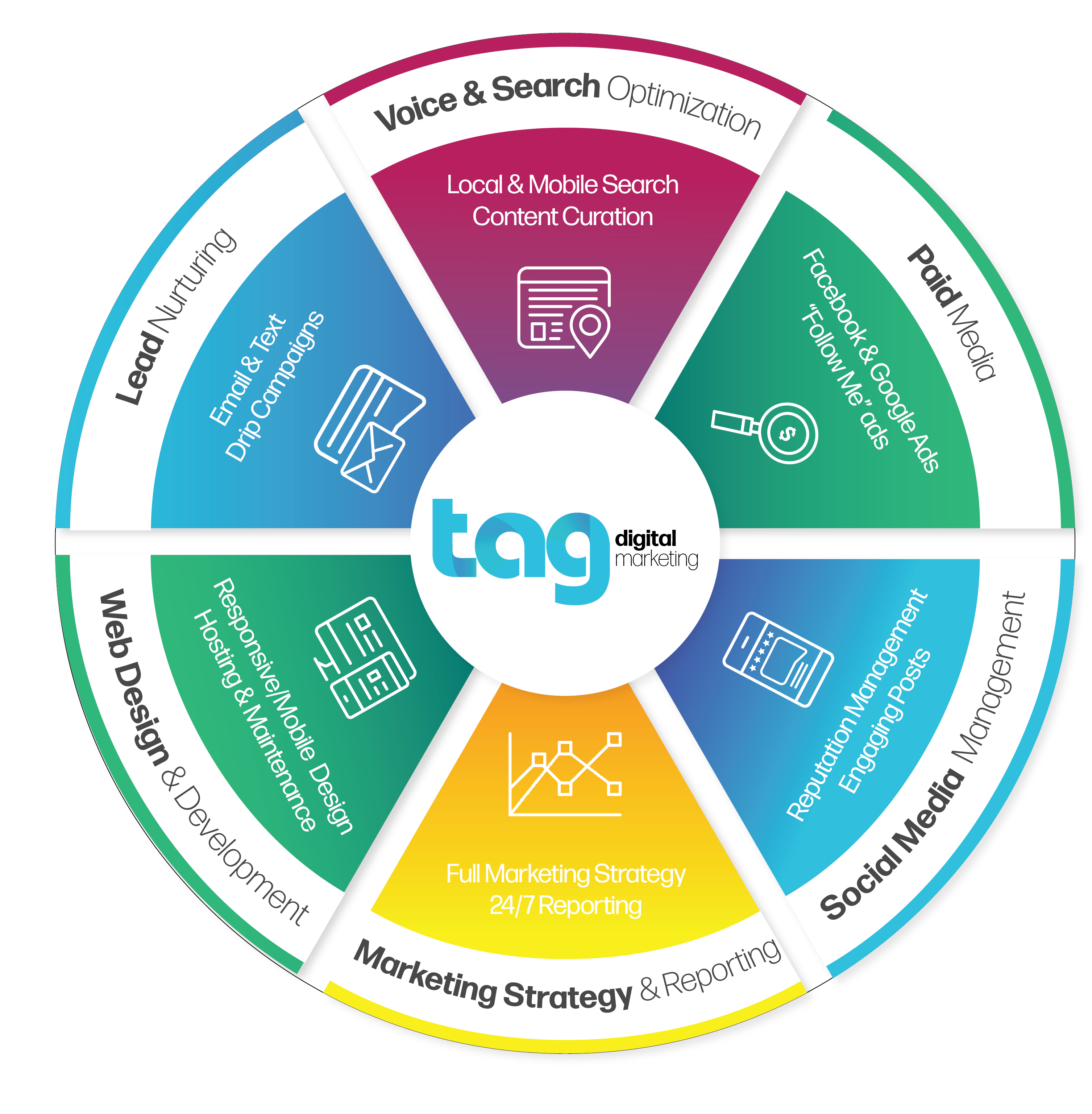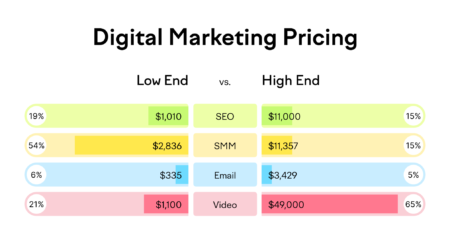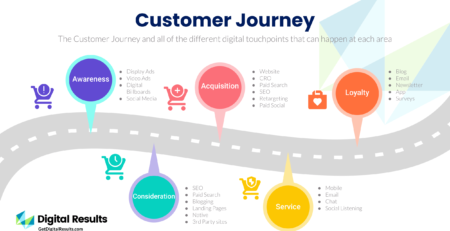What Is Tag In Digital Marketing?
Are you curious about digital marketing and want to know what a tag is? Well, you’ve come to the right place! In this article, we’ll dive into the exciting world of digital marketing and explore the concept of tags. So, let’s get started and discover what a tag really means in the context of digital marketing.
In the vast realm of digital marketing, there are numerous tools and strategies that help businesses reach their target audience. One such tool is a tag. But what exactly is a tag? Simply put, a tag is a small snippet of code that is placed on a website. It’s like a secret agent that quietly works behind the scenes, gathering valuable information about website visitors.
Now, you might be wondering, why is this information important? Well, tags track various actions performed by visitors, such as clicks, purchases, or form submissions. This data is like gold for marketers because it allows them to better understand their audience’s behavior, preferences, and needs. With this insight, businesses can create more personalized and targeted marketing campaigns to deliver the right message to the right people at the right time.
So, tags are pretty powerful, right? They help businesses collect valuable data and optimize their digital marketing efforts. In the next section, we’ll explore the different types of tags and how they are used in various digital marketing channels. Get ready to dive deeper into the fascinating world of tags in digital marketing!
What is Tag in Digital Marketing?
Digital marketing has revolutionized the way businesses promote their products and services online. One integral component of digital marketing is the use of tags. Tags refer to snippets of code embedded in a website’s HTML that enable tracking, measurement, and analysis of user behavior. In this article, we will delve into the world of tags in digital marketing, exploring their purpose, types, implementation, and benefits.
1) What is a Tag and How Does it Work?
A tag is a piece of code, typically JavaScript, that is added to a website or mobile app to collect specific information about user actions, behavior, or preferences. Tags are used in various digital marketing strategies to track website visitors, analyze their interactions, and measure the effectiveness of marketing campaigns. When a user visits a website or completes an action, such as making a purchase or filling out a form, the tag sends data to a third-party analytics tool or platform.
Tags facilitate the collection of valuable data that helps businesses optimize their marketing efforts. They enable the tracking of key metrics such as page views, click-through rates, conversion rates, and bounce rates. By analyzing this data, businesses can gain insights into their audience’s preferences and behavior, make informed marketing decisions, and improve the overall user experience on their website.
2) Common Types of Tags in Digital Marketing
There are several types of tags used in digital marketing, each serving a specific purpose. Let’s take a look at some of the most common types:
Conversion Tags:
Conversion tags, also known as conversion tracking tags, are used to track and measure specific actions that users take on a website. These actions can include making a purchase, downloading a resource, or signing up for a newsletter. Conversion tags help businesses identify the sources that drive conversions, allowing them to focus their marketing efforts and optimize their campaigns accordingly.
Remarketing Tags:
Remarketing tags are utilized to target users who have previously visited a website or performed specific actions. These tags enable businesses to serve customized ads to these users, reminding them of the products or services they showed interest in. By employing remarketing tags, businesses can increase brand awareness, engage potential customers, and ultimately boost conversions.
Analytics Tags:
Analytics tags are used to gather data about website visitors and their interactions. These tags are integrated with analytics platforms such as Google Analytics, which provide businesses with insights into website traffic, user demographics, and user behavior. Analytics tags are crucial for monitoring the performance of marketing campaigns, identifying areas for improvement, and measuring the effectiveness of various marketing channels.
3) Implementing Tags: Best Practices and Considerations
Implementing tags correctly is essential to ensure accurate data collection and analysis. Here are some best practices and considerations to keep in mind:
1. Plan your tag strategy:
Before adding tags to your website, outline your objectives and determine the specific data points you want to track. This will help you choose the most appropriate tags for your needs and avoid cluttering your code with unnecessary tags.
2. Use a Tag Management System (TMS):
A tag management system provides a centralized platform for managing tags on your website. It streamlines the process of adding, editing, and removing tags without requiring manual code changes. TMSs also enable you to control when and where tags are fired, reducing the risk of errors and improving the overall performance of your website.
3. Test and validate your tags:
Before going live with your tags, thoroughly test and validate them to ensure they are working correctly. This involves checking if tags fire at the appropriate times, send data to the correct analytics platforms, and provide accurate information for analysis.
4. Regularly review and update your tags:
As your website evolves and marketing strategies change, it’s crucial to review and update your tags accordingly. Regularly audit your tags to remove obsolete or redundant ones, ensuring that you are collecting meaningful data that aligns with your current marketing objectives.
In conclusion, tags play a vital role in digital marketing by enabling accurate tracking, measurement, and analysis of user behavior. By using tags effectively, businesses can gain valuable insights into their audience, optimize marketing campaigns, and enhance the overall user experience. Implementing tags requires careful planning, adherence to best practices, and continuous monitoring to ensure accurate and reliable data collection. So, take advantage of tags in your digital marketing efforts and unlock the full potential of your online presence.
Key Takeaways: What is Tag in Digital Marketing?
- A tag in digital marketing is a piece of code or snippet that is placed on a website to collect data and track user behavior.
- Tags help marketers analyze and optimize their digital marketing efforts by providing insights into website traffic, conversions, and user interactions.
- Popular tag management systems include Google Tag Manager and Tealium, which make it easier to deploy and manage tags on a website.
- Tags can be used to track various actions such as form submissions, button clicks, video views, and more, allowing marketers to measure the effectiveness of their campaigns.
- Properly implementing tags is crucial for accurate data collection and reporting, as well as for ensuring compliance with privacy regulations.
Frequently Asked Questions
Welcome to our Frequently Asked Questions section where we answer your queries about tags in digital marketing. Below, you’ll find clear and concise explanations to help you understand the importance and functionality of tags in the digital marketing realm.
1. How do tags work in digital marketing?
In digital marketing, tags are snippets of code placed on a website to gather information about user behavior and provide data to analytics platforms. These tags typically consist of JavaScript code that communicates with tracking tools. Once a user interacts with a website, the tag records the action and sends the data to a central system for analysis.
For example, an e-commerce website may use a tag to track when users add items to their cart. This information is then used to analyze conversion rates, identify customer trends, and optimize marketing strategies. Tags play a vital role in tracking user engagement and enabling data-driven decision-making in digital marketing.
2. Why are tags important in digital marketing?
Tags are crucial in digital marketing because they provide valuable insights into user behavior and website performance. By accurately tracking user actions, tags help marketers understand which marketing campaigns are most effective, which website pages generate the most engagement, and how users navigate through the website.
These insights allow marketers to refine their strategies, personalize messaging, and optimize user experiences. By leveraging data obtained through tags, digital marketers can make informed decisions that drive better campaign performance, enhance user engagement, and ultimately increase conversions and revenue.
3. How are tags used for remarketing campaigns?
Tags are instrumental in remarketing campaigns, which aim to target users who have previously visited a website but didn’t convert. When a user visits a website, a tag is placed on their browser, allowing the website to track their online activity. This information is then used to display tailored ads to these users across various platforms.
For instance, if a user looked at a specific product on an e-commerce website but didn’t make a purchase, tags can be used to show ads for that same product on other websites the user visits. By effectively utilizing tags to monitor user behavior and deliver personalized ads, remarketing campaigns can significantly increase conversions and improve overall marketing ROI.
4. Can tags impact website performance?
Yes, tags can potentially impact website performance if they are not implemented and managed properly. Adding too many tags or poorly optimized tags can lead to slower website loading times and adversely affect the user experience. This, in turn, can increase bounce rates and hinder conversions.
To combat this, it’s crucial to carefully evaluate the necessity of each tag and ensure that they are properly implemented and optimized. Working with web developers and regularly reviewing the tags in use can help maintain website performance while still gathering the necessary data for marketing analysis.
5. Are there different types of tags used in digital marketing?
Yes, there are various types of tags used in digital marketing. Some of the common ones include:
– Conversion tracking tags: These tags track specific actions users take on a website, such as completing a purchase or filling out a form.
– Remarketing tags: These tags allow website owners to target ads at users who have previously visited their website.
– Analytics tags: These tags provide data to analytics platforms to track user behavior, website performance, and campaign effectiveness.
– A/B testing tags: These tags help marketers compare and analyze different versions of webpages, ads, or marketing elements to determine the most effective one.
Each type of tag serves a specific purpose and contributes to the overall success of a digital marketing strategy.
Tag Management Tips: What are Tags?
Summary
Tags in digital marketing are like labels that help organize and describe the content on websites or in ads. They make it easier for search engines to understand and categorize the information. There are different types of tags, like meta tags and title tags, that serve different purposes. By using tags effectively, businesses can improve their website’s visibility and reach more people. It’s important to choose relevant and accurate tags to ensure the right audience finds the content they’re looking for.












